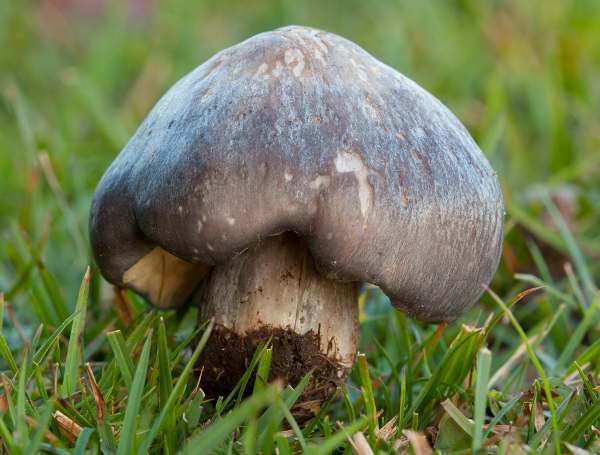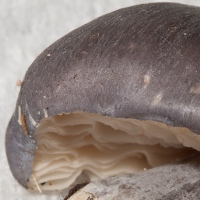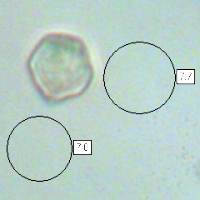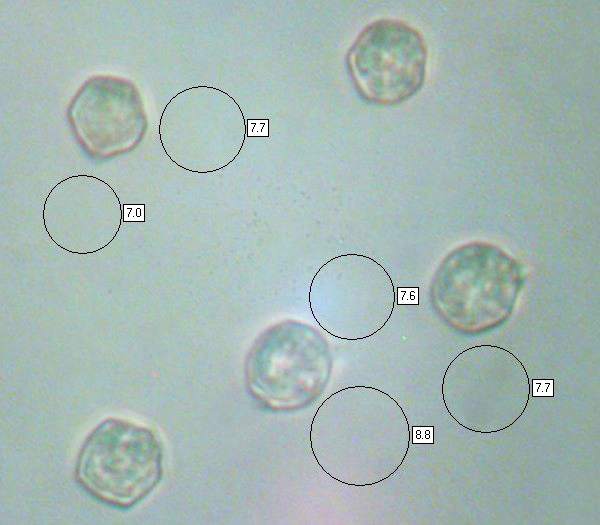Entoloma bloxamii (Berk. & Broome) Sacc. - Big Blue Pinkgill
Phylum: Basidiomycota - Class: Agaricomycetes - Order: Agaricales - Family: Entolomataceae
Distribution - Taxonomic History - Etymology - Identification - Culinary Notes - Reference Sources

Very few mushrooms are blue, and Entoloma bloxamii is one of the largest and most conspicuous of those that are. Blue is an unusual colour for an Entoloma, although in that respect the Big Blue Pinkgill is not entirely alone - Entoloma chalybaeum is another example. Even so you will have no trouble identifying this species, because Entoloma bloxamii is so untypical of its genus in terms of its stature: it looks just like a Tricholoma or a Russula... until you see the gills, which are the typical pink of an Entoloma.
Note that some authorities, particularly in the USA, spell this scientific name as Entoloma bloxami rather than Entoloma bloxamii.
When Bruce Ing produced the Red Data List for British fungi in 1992, Entoloma bloxamii was included as ' Endangered'. This mushroom has since been removed from the Red Data List (Shelly Evans et al 2006); however, it remains a priority species in the UK Biodiversity Action Plan.
Distribution
The Big Blue Pinkgill is a very rare find in Britain and Ireland, with Northern Ireland apparently being its main stronghold in the Emerald Isle; Entoloma bloxamii occurs throughout most of mainland Europe, where it is also very rare. This species (although mainly in woodland habitats, which is rather puzzling) is reported occasionally from North America (British Columbia, Canada).
Taxonomic history
This remarkable but sadly too seldom seen mushroom was described scientifically in 1854 by British mycologists Miles Joseph Berkeley and Christopher Edmund Broome (1809 - 1866), who gave it the binomial name Agaricus bloxami in honour of English clergyman and naturalist Andrew Bloxam (1801 - 1878). Quite why the name was spelt (incorrectly, surely!) bloxamii rather than bloxami (with a single i) is lost in the mists of time, but under the rules of the International Code of Botanical Nomenclature (ICBN) the error cannot now be corrected. Most gilled mushrooms were, in those days, initially placed in a gigantic Agaricus genus most of whose occupants have since been redistributed across many new genera. It was Italian mycologist Pier Andrea Saccardo who, in 1887, transferred this species to the genus Entoloma, at which point its scientific name became Entoloma bloxamii.
Synonyms of Entoloma bloxamii include Agaricus bloxamii Berk. & Broome, and (invalid) Entoloma madidum (Fr.) Gillet.
Etymology
The generic name Entoloma comes from ancient Greek words entos, meaning inner, and lóma, meaning a fringe or a hem. It is a reference to the inrolled margins of many of the mushrooms in this genus.
The specific epithet bloxamii honours Andrew Bloxam.
Identification guide
 |
Cap3.5 to 8cm across; initially conical, developing an umbo as it becomes broadly convex; not hygrophanous; deep blue to indigo, gradually becoming violaceous brown with age; surface smooth with silky radial fibrils but not striate. GillsCrowded, adnate or emarginate; white at first, maturing salmon pink. Stem3.5 to 7cm long and 1 to 3.5cm diameter, tapering towards the base; colour as cap but whitish or occasionally yellowish towards the base; with longitudinal silky fibrils; no stem ring. |
 |
SporesMostly five- or six-angled (pentagonal or hexagonal) in side view; 7.5-9 x 6.5-8μm;Qav=1.1; inamyloid. Spore printBrownish pink. |
Odour/taste |
Slightly mealy (farinaceous) but not distinctive. |
Habitat & Ecological role |
Saprobic in unimproved grassland, mainly but not solely on calcareous soil and on basalt with calcareous flushes. |
Season |
Fruiting from summer to late autumn. |
Similar species |
Entoloma nitidum is a smaller pinkgill with similar colouring to that of the Big Blue Pinkgill, but it is also much more slender than Entoloma bloxamii. Because of its unusual stature and colouring the Big Blue Pinkgill is unlikely to be confused with any other grassland mushroom. |
Culinary Notes
Entoloma bloxamii is far too rare to be collected for anything but essential research. Let's treat it as deadly poisonous!
Reference Sources
Fascinated by Fungi, 2nd Edition, Pat O'Reilly 2016, reprinted by Coch-y-bonddu Books in 2022.
Studies in the genus Entoloma (Basidiomycota, Agaricales) from the Kiklades (C. Aegean, Greece), Machiel Noordeloos & Elias Polemis; Mycotaxon, Volume 105, pp. 301–312 July–September 2008.
Knudsen H., Vesterholt J. (eds) Funga Nordica: agaricoid, boletoid and cyphelloid genera - Nordsvamp, 2008
Dictionary of the Fungi; Paul M. Kirk, Paul F. Cannon, David W. Minter and J. A. Stalpers; CABI, 2008
Taxonomic history and synonym information on these pages is drawn from many sources but in particular from the British Mycological Society's GB Checklist of Fungi.
Acknowledgements
This page includes pictures kindly contribited by David Kelly.
Fascinated by Fungi. Back by popular demand, Pat O'Reilly's best-selling 450-page hardback book is available now. The latest second edition was republished with a sparkling new cover design in September 2022 by Coch-y-Bonddu Books. Full details and copies are available from the publisher's online bookshop...


